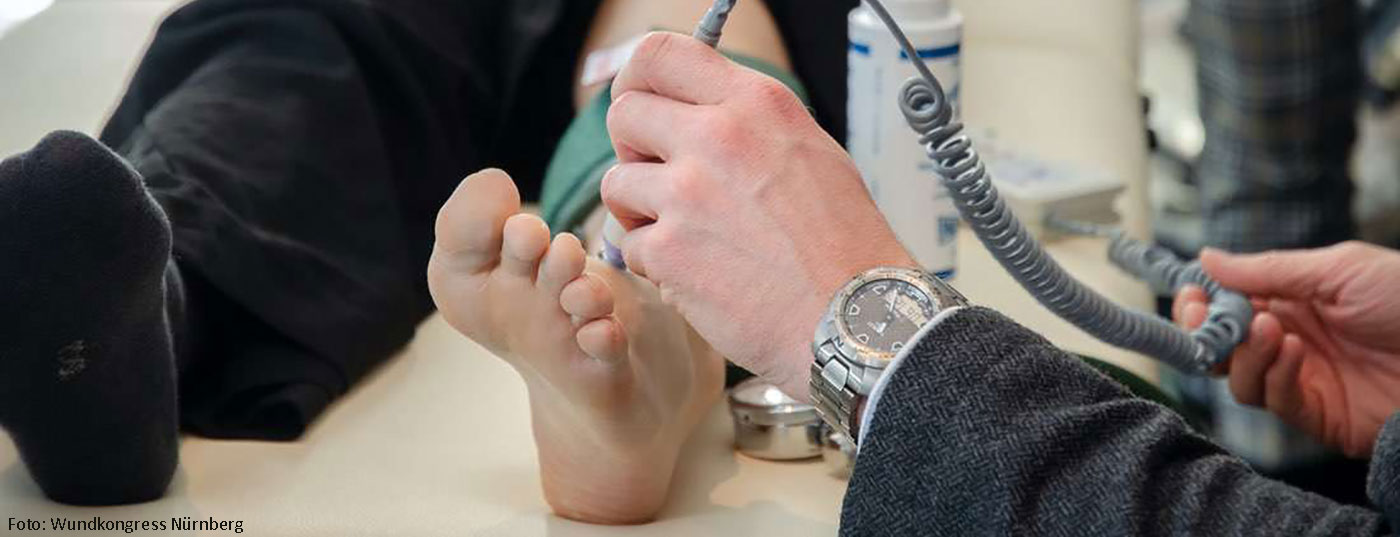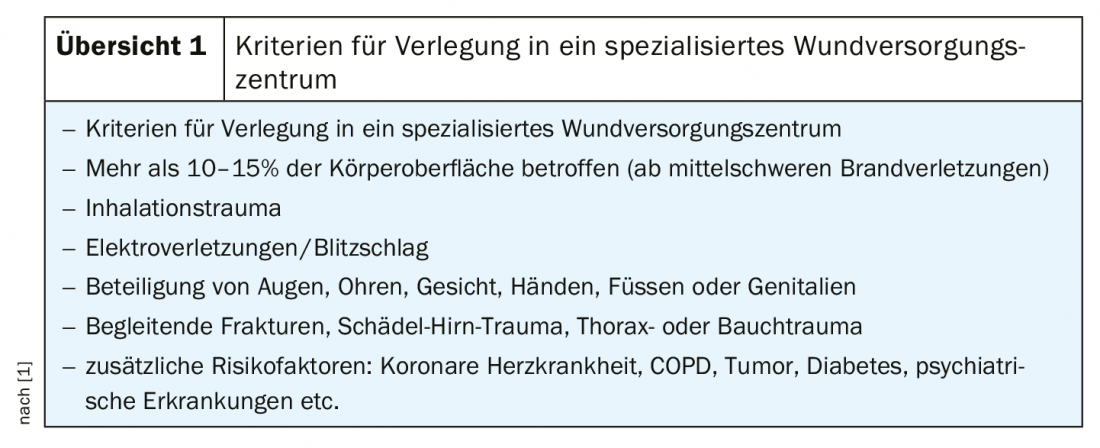Correct diagnostic assessment is the basis for adequate therapy. Whether second-degree burns should be treated in an outpatient or inpatient setting depends on the depth of the burn and the area affected, among other factors.
Regarding second-degree burns, it makes a big difference functionally whether it is a superficial or a deep burn. Depending on the case, conservative therapy is sufficient or surgical intervention is indicated, explains Prof. Dr. med. Hans-Oliver Rennekampff, Rhein-Maas Klinikum, Aachen Würselen (D) [1]. Needle prick test (the deeper the burn, the less painful) and recapillarization determination (the deeper the burn, the less blood flow) can be used in the assessment of findings.
Outpatient or inpatient setting?
Whether a grade 2a burn wound should be treated as an outpatient or rather in an inpatient setting depends on several factors. The area of combustion plays an important role. If only 2-3% are affected (e.g., the hands), outpatient treatment can be performed at the patient’s request. However, if the burn is extensive, care should be provided in an inpatient setting. Depending on the condition, patient receives intravenous painkillers there. In the context of conservative outpatient treatment, there is a wide range of local therapeutic agents that can be used to protect against an impending infection through antimicrobial action: Octendin (Octenisept), polyhexanide (Lavasept), chlorhexidine (in combination with gauze as Bactigras). The speaker pointed out that all substances are effective, but also have some cytotoxicity. For severe infections that cannot be controlled with antibiotics, Inflammazine (silver sulfadiazine) can be used. A secondary analysis comparing different local therapeutics (alginates, hydrofiber, hydrogels, hydrocolloids, foams/foams, films) did not reach a clear conclusion [2]. Experience values are decisive – it is best to use what has proven itself in practice, explains the speaker.
Criteria for suitable wound dressing
Based on experience and scientific evidence [3], Prof. Rennekampff prefers to use an absorbable, microporous membrane in the inpatient setting and an antimicrobial foam dressing with silver and soft silicone in the outpatient setting. Using this dressing, the wound can be closed for two to three weeks without changing the dressing. This method has been proven to protect against infections and if it is really a grade 2a burn, a significant improvement of the condition is achieved in this period. The substance degrades over time, and the wound becomes slightly acidic during this degradation process.
Selective debridement recommended
If one is unsure whether surgical intervention is indicated for grade 2a burns, one can initially use an absorbable microporous membrane and evaluate after three weeks whether this is sufficient or surgical treatment is required. The fact that you lose valuable time as a result is problematic, the speaker said. It is therefore important to discuss this with the patient, he said. If surgical intervention is performed for a second or third degree burn, the necrosis must first be surgically removed. Regarding the method of tangential ablation, the lecturer draws attention to the fact that there may be considerable blood loss.
Debridement has a significant impact on the vitality of patients, it is a crucial aspect of burn treatment. The overall goals of debridement are removal of necrotic, nonperfused tissue (nidus for bacteria and fungi, toxins, and immunosuppressive agents), removal of infected tissue, and acceleration of epithelialization. Enzymatic debridement can be performed using bromelain (pineapple extract). This separates denatured collagen (burnt skin) and healthy collagen. After a few hours, the dead tissue can be removed, leaving the vital wound bed, which can be treated conservatively if necessary. It is a selective debridement, as it is useful in the context of burn medicine. Split skin grafting would be avoided if possible, it takes a long time to heal and is said to be unaesthetic.
Avoid hypertrophic scars
The time to healing correlates strongly with scarring – the longer it takes, the higher the risk of scarring (box) [4]. Using case studies of various forms of second-degree burn wounds, the speaker illustrates this. One is that if the epithelium is not closed, this means activation of the connective tissue, the fibroblasts. The associated collagen production leads to hypertrophic scars, which is common in burn patients. The other is that inflammation is maintained longer by infection. How can faster epithelialization be promoted? Adequate moist wound treatment influences epithelialization most favorably. Drying out results in a deepening of the wound, which leads to a higher risk of scarring. The more losses in the dermis, the more scars.
There are several other ways to speed healing and prevent hypertrophic scars. Non-contact electrotherapy generates a current on the wound, causing cells to migrate faster and accelerating wound closure. This method can also be used for chronic wounds, he said. Ointments (e.g., vitamins A, C, E; marigolds) can be used as part of aftercare. Other options include: Compression, silicone overlays, cortisone injection, medical needling, fat injection and surgical treatment.
Source: Nuremberg Wound Congress
Literature:
- Rennekampff H-O: Burn wounds – sensibly treated, slide presentation, Prof. Dr. H.-O. Rennekampff, Clinic for Plastic Surgery, Hand and Burn Surgery, Rhein-Maas Klinikum, Aachen Würselen, Nuremberg Wound Congress, 06.12.2019.
- Oostema JA, Ray DJ: Evidence-based emergency medicine: clinical synopsis. No clear winner among dressings for partial-thickness burns. Ann Emerg Med 2010; 56(3): 298-299.
- Hundshagen G, et al: A prospective randomized controlled trial comparing the outpatient treatment of pediatric and adult partial-thickness burns with Suprathel or Mepilex Ag. J Burn Care Res 2018; 39(2): 261-267.
- Werdin F, et al: Healing time correlates with the quality of scaring: results from a prospective randomized control donor site trial. Dermatol Surg 2018 ; 44(4): 521-527.
HAUSARZT PRAXIS 2020; 15(2): 36-37 (published 9.2.20, ahead of print).













